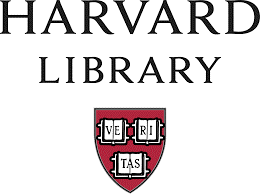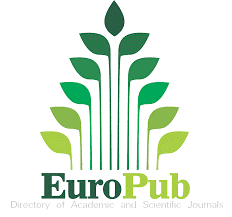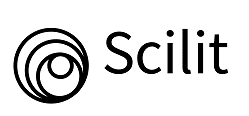Correspondence analysis in the floristic diversity on coffee agroecosystems of the Peruvian central rain forest
Keywords:
Coffea arabica, floristic diversity, agroecosystems, tropical forest, diversity indexesAbstract
The present study evaluated the floristic diversity present in three different coffee agroecosys-tems of the Peruvian central rain forest: El Oconal, Alto Kimiriki and Río Venado, that allowed knowing the species of greater importance in the crop, both introduced species and native species. The study was realised with the botanical identification of species, indexes of vegetal diversity in permanent plots. The species found were: Inga brachyptera (known as Pacae), that predominates in the El Oconal and Rio Venado areas, while Musa paradisiaca was the main specie found in Alto Kimiriki, other species such as Pinus sp. (pino), Perebea sp., (chimicua) and Cedrelinga sp. (screw) are present in the three study areas, many of them scarce but preserved by the shade that the product to the crop. The Shannon Weaver index (H') showed that there is a differentiation between sectors, finding higher values of 3,63 bits ind-1 for Rio Venado-Satipo, while correspondence analysis showed the tendency to group species around each sector of study, obtaining that in the sector of Villa Rica, species such as Inga sp., Juglans neotropica, Pseudolmedia rigida, Ficus sp., Citrus cinensis, they are mostly concentrated; while in Satipo, the species Cedrelinga catenaeformis, Calycophillum sp. they show the highest correspondence with the place, and in the Pichanaki sector the correlation is less strong than in the two sectors, with Heliocarpus sp. and Cedrela sp. being mostly correlated.References
ANDINA, (09 de Septiembre, 2013). Café: Minagri proyecta exportaciones superiores a US$800 millones en 2017. Recuperado de http://www.andina.com.pe/
Antón, D., & Reynel, C. (2004). Relictos de bosques de excepcional diversidad en los Andes Centrales del Perú. Lima.
Badii, M., Guillen, A., Rodríguez, C., Lugo, O., Aguilar, J., & Acuña, M. (2015). Pérdida de Biodiversidad: Causas y Efectos. Revista Daena (International Journal of Good Conscience), 10(2).
Beer, J., Muschler, R., Kass, D., & Somarriba, E. (1997). Shade management in coffee and cacao plantations. Agroforestry systems, 38(1-3), 139-164.
Caballero, J. D. (1980). Tendencias de la deforestacion con fines agropecuarios en la Amazonia peruana. Revista Forestal del Peru, 10(1-2), 1-8.
Cardona, J. C. (2003). Caracterización y evaluación de los agroecosistemas de los centros agropecuarios cotové y paysandú. Medellín, Colmbia.
Cary Fowler, P. M. (1990). The Threatened Gene: Food, Politics, and the Loss of Genetic Diversity. Lutterworth-UK
Díaz, S., Fargione, J., Chapin, F., Tilman, D.Díaz, S., Fargione, J., & Chapin. (2006). Biodiversity loss threatens human well-being. Albuquerque.
Encarnación, F., & Zárate, R. (2010). Vegetación: informe temático Proyecto Mesozonificación Ecológica y Económica para el Desarrollo Sostenible de la provincia de Satipo. Iquitos.
Gentry, A. (1982). Patterns of neotropical plant species diversity. In Evolutionary biology (pp. 1-84): Springer.
Gentry, A., & Ortiz, R. (1993). Patrones de composición florística en la Amazonía peruana. Amazonía Peruana: Vegetación húmeda tropical en el llano subandino, 155-166.
Gliessman, S. (2002). Agroecología. Costa Rica: Turrialba.
Huallpa, L. L. (2009). Procesos migratorios en la amazonia peruana: una mirada a las migraciones internacionales. Migração internacional pan-amazônia NA, 97.
INIAP - GTZ. (1993). Manual Del Cultivo Del Cafe. Quevedo: Estación Experimental Pichilingue.
Krebs, C. (1985). Estudio de la Distribución y la Abundancia. Mexico: Harla.S.A.
MAGAP. (2010). Estructura de la Cadena de Café, Departamento de Gestión Agroindustrial. Quito.
Manual para la idntificación de especies forestales en la región Ucayali. (2013). Recuperado de https://goo.gl/1q246Z
Manson R.H., H.-O. V. (2008). Agroecosistemas cafetaleros de Veracruz: biodiversidad, manejo y conservación. Mexico: INECOL, INE-SEMARNAT
McNeely_et.al. (1990). Conserving the World's Biological Diversity. Washington: WWF-US and the World Bank.
Melo, O., & Vargas, R. (2003). Evaluación Ecológica y Silvicultural de Ecosistemas Boscosos. Universidad del Tolima. Ibagué, Colombia..
Municipalidad Distrital de Pichanaki. (2006). Plan de Desarrollo Estratégico Concertado de Pichanaki 2006 -2015. Pichanaki.
Otárola, M., & Alpízar, F. (2006). Producción de café ecológico (certificado orgánico y comercio justo) de la organización CECOVASA, Perú. CATIE, 90-104.
Pinto, C. A. L., & Paredes, S. R. Y. (2014). Los servicios ecosistémicos en el Perú. Xilema, 27(1), 62-75.
PROAMAZONIA- MINAG. (2003). Caracterización de las Zonas Cafetaleras del Perú. Lima.
Ruokolainen, K., Tuomisto, H., Ríos, R., Torres, A., & García, M. (1994). Comparación florística de doce parcelas en bosque de tierra firme en la Amazonia peruana. Acta amazonica, 24(1-2), 31-48.
Salas Pinilla, N. (2009). Variación en la diversidad funcional de plantas en cafetales sin sombra, con sombra y bosque (Quindío, Colombia).
Sánchez, L., Durán, S., Vélez, J., García, R., & Botero, J. (2008). Estudios regionales de biodiversidad en las zonas cafeteras de Colombia (0120-0178). Retrieved from
Downloads
Published
Versions
- 2021-03-15 (2)
- 2018-01-03 (1)
How to Cite
Issue
Section
License
Copyright (c) 2018 Bosques Latitud Cero

This work is licensed under a Creative Commons Attribution-NonCommercial-ShareAlike 4.0 International License.
This work is published under the Creative Commons Attribution-NonCommercial-ShareAlike 4.0 International (CC BY-NC-SA 4.0) license. This means that users may copy, distribute, and adapt the content, provided that proper credit is given to the authors and the journal. Commercial use of the material is not permitted. Additionally, any derivative work must be distributed under the same license. This license ensures open access to knowledge, promoting the dissemination and reuse of published works for non-commercial purposes, respecting authorship, and ensuring the free circulation of content under fair terms.





























